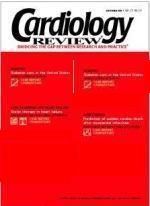Publication
Article
Cardiology Review® Online
Case report: A diabetic with multiple medications and chronic pain
A 68-year-old woman with type 2 diabetes arrived at her primary care physician’s office with a plastic bag full of pill bottles and the primary symptom of hip and knee pain. She had hypertension, hyperlipidemia, mild renal insufficiency, and arthritis, and had had a silent myocardial infarction 4 years earlier.
The patient’s primary care physician was running late, but was able to see her for a 15-minute follow-up appointment. Her blood pressure was 148/88 mm Hg, her pulse
was 72 beats per minute, and she was afebrile. Her most recent laboratory results from 6 months earlier included a glycosylated hemoglobin (A1c) level of 7.8%, creatinine level of 1.4 mg/dL, total cholesterol level of 211 mg/dL, and low-density lipoprotein cholesterol level of 112 mg/dL. Her medical regimen included metformin, glyburide, atenolol, lisinopril, atorvastatin, enteric-coated aspirin, naproxen, and acetaminophen.
The patient’s primary concern was her chronic hip and knee pain, which began several years earlier. Her current regimen was not helping, but she declined a referral for physical therapy. She was also unsure whether she should continue her atorvastatin because she had read that it might contribute to muscle pain.
Mindful of the time, her primary care physician examined her briefly. He found no evidence of effusion, crepitus, or active inflammation, although she had limited range of motion of her knees and hips. He recommended stopping the naproxen and starting ibuprofen, and again recommended physical therapy.
The next 5 minutes were spent reconciling discrepancies between her charted medication list and the pill bottles she had brought to the office. Her primary care physician decided to spend the last part of the visit emphasizing the importance of lipid-lowering therapy in terms of future cardiovascular risk reduction and reassuring her that the atorva-statin was not likely to be contributing to her arthritic pain. Rather than making any medication adjustments during the current clinic visit, the primary care physician chose to take a repeated fasting lipid panel and A1c level, and to check her blood pressure again at the next visit.
Conclusion
It can be a challenge to carry out evidence-based guidelines of care in the setting of limited time and competing demands. Moreover, with increasing medical regimen complexity, more time is required to review medication adherence and side effects. Structured care models that include group visits, collaboration with diabetes educators and nurse practitioners, and problem-focused visits may offer a solution to the traditional ambulatory model of care.
